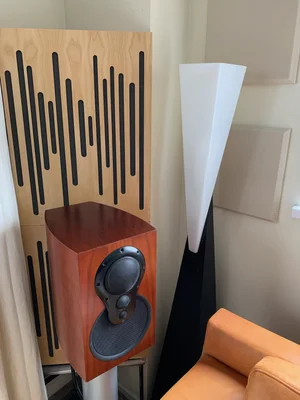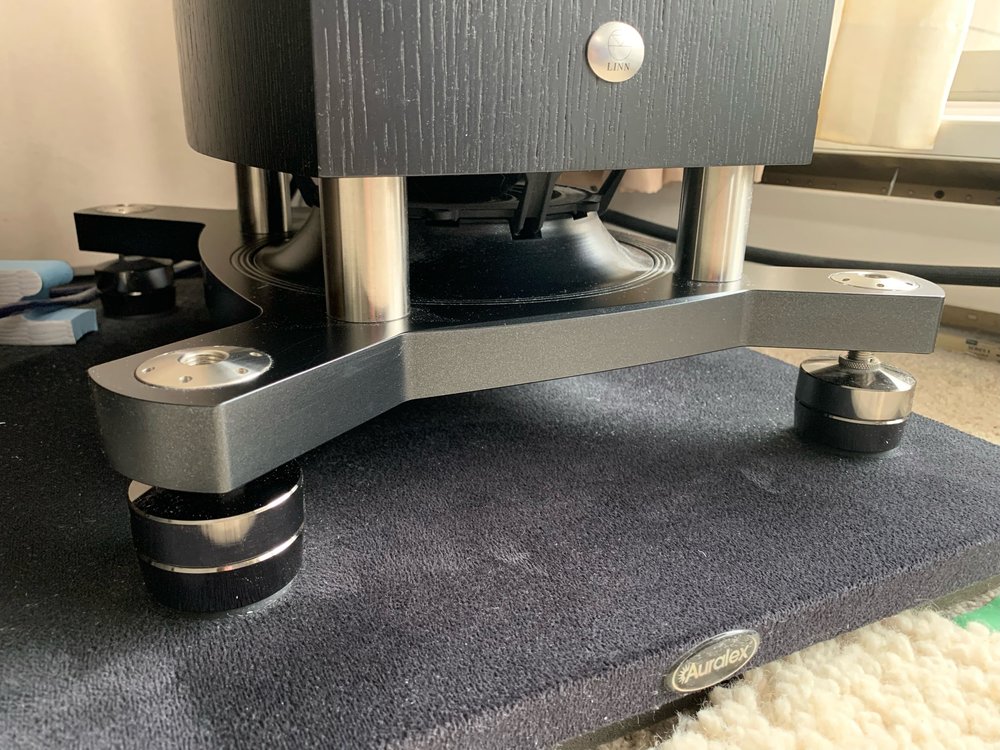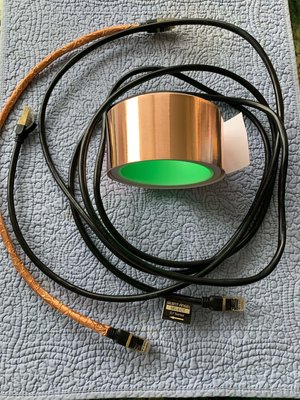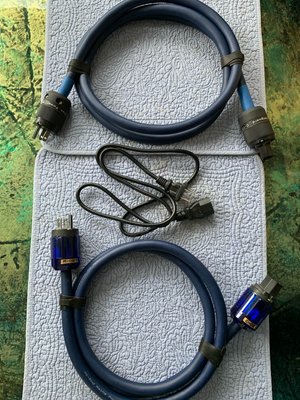
Signal loss is causing your system to sound 30-40% less good than it could. That’s my estimate, and I think it’s conservative.
The loss begins at the source and continues through a bog of electronic parts, EMI, connectors, and cables, a long process of loss that doesn’t end with your speakers, but your room. Everything in the chain up to your ears will cause some signal loss to occur that will take you one step further from hearing the full potential of your system.
Uncontrolled, signal loss will impair all the things we love about great audio: imaging, transparency, bass, resolution, clarity, you name it. Signal loss might be the number one reason why some people are never happy with their sound and constantly feel the need to upgrade, when perhaps all that’s needed is some judicious use of signal loss prevention to make their system sing.
And that’s the good news—that there are ways to help prevent signal loss and preserve the sound quality that’ll make us keep coming back for more. And I believe that the vast majority of hi-fi systems could be optimized against signal loss to sound better by up to 30-40%.
This article outlines my surprising journey for the last 10 years, that helped me unlock the hidden potential of my hi-fi system, and will hopefully help unlock that of your system as well.
To start with, you need a great source—the one that sounds best to your ears. Using a poor source will always be a bottleneck to getting the best possible sound from your downstream components. You can’t make up for a poor source by upgrading your electronics or speakers, just like you can’t use poor quality food ingredients to make a 5-star gourmet meal. Obviously, better electronics and speakers will make your system sound better, but you’ll always be limited by your source, so always start with a great one.

Room Acoustics and Music Loss
Poor speaker placement and room acoustics will mask or degrade musical notes before they reach your ears. Muddy bass is especially toxic. It will prevent you from hearing some of the highs and mids, even though they’re in the room. Or they’ll overpower them, distorting images, details, harmonies, and musical timing.
When positioning speakers, small adjustments, even those of a few millimetres, forward or backward, can make a profound difference in how the sound is propagated. Also important is finding the right distance between the speakers. Generally, speakers need room to breathe and should be kept away from walls.
Adjusting toe-in can tame sound reflections based on the principle that the more the speakers are facing you, the more direct sound will reach your ears. I sit approximately 3 meters from my front speakers, which are toed-in 22 degrees. This gives me a big, deep soundstage, with excellent imaging. That said, every setup is different and some speakers are designed for no toe-in, so experimentation, as usual, is key.
Bad acoustics will also cause signal loss. Reflections of sound off furniture, windows or other hard surfaces will excite highs to the point of sounding shrill, a sure recipe for listening fatigue. But careful with damping. Too much will rob the life out of the music, making it sound uninspired.
The ideal situation would be that all the music coming from your speakers goes directly into your ears, as with headphones. That’s not going to happen with speakers, as the music bounces around the room first, creating a series of inter-colliding reflections. Bass is especially problematic, because not only will you hear bass directly, but again a fraction of a second later after it has bounced off the walls, floors, and ceilings, then again as it bounces around the room. This affects the timing and rhythm of the music, and reduces your ability to clearly hear the voices and instruments as they were meant to be heard.


If you want high-end rather than mid-fi sound, it’s crucial to optimize speaker placement in relation to the walls and toe-in (assuming toe-in is needed). Use bass traps to prevent secondary and tertiary reflections from bouncing around the room and muddying the sound. Room absorption panels and diffusers can further control the sound bouncing around the room, so that you can hear the music as directly as possible from the speaker drivers, with the least amount of signal loss.
I use Vicoustic extreme traps, Primacoustic absorption panels and diffusers, and some absorption panels from ATS. But if you want to experience with makeshift acoustic treatment using household products, bookcases and plants can act as diffusers, while area rugs, window coverings, wall-to-wall carpeting, and cushions can act as absorption devices. It’s also possible to build your own Helmholtz resonators to address bass issues.
Cables and Power Bars
Every cable and cable connector—a banana plug, spade, and RCA connector—will cause some signal loss and colouration to the sound, due principally to the cable’s connectors, the soldering, the design, or its materials of construction. Signal cables in close proximity to power cords are always a bad idea, as EMI is notorious for marring the bass, soundstage, mids and highs, resolution, and details.
Ethernet cables are most susceptible to the destructive effects of power cord generated EMI. Other sources of signal loss include a noisy power supply and vibrations in the electronic components.
Based on my having tried out dozens of different power cords, RCA, Ethernet, HDMI, and speaker cables, from inexpensive to top-of-the-line ones, I can say emphatically that not all cables are equal, not even those that cost the same. They certainly don’t all sound the same. Design and build quality matter. So do cable designers. Some designers are just better than others, or have better equipment at their disposal to help them design better cables.

I’ve heard extremely expensive speaker cables and other cables that cost more than some people’s whole stereo system’s electronics and speakers. While there’s no question that some expensive cables provided significant performance in sound quality, I’d be more tempted to use the money to upgrade the electronics and speakers. I’d choose mid-range cables from a manufacturer—their sweet spot in their lineup. The sweet spot are cables that provide some of the best qualities of the company’s most expensive cables, at a fraction of their cost.
Better quality cables generally use higher quality components, materials, and more effective designs than does their cheaper counterpart. They mitigate signal loss and colour the music less. They’re designed and engineered to provide a cleaner and more efficient electrical flow by minimizing the effects that can come from exposure to radio waves and EMI— not a simple matter, as cables can act as antennas.
Many people I know use cables by Blue Jeans, which are moderately priced, but these can be bettered if you’re willing to spend more money. I currently use a mix of Cardas and Shunyata cables in my system, but there are many choices available, from myriad manufacturers, that offer excellent sound quality.
The best option, if possible, is to audition different cables in your own system to see if you like them. Online retailer The Cable Company offers an extensive cable lending library that will lend you cables for two weeks to help you decide which complement your system best. The company also offers component-cable synergy advice they’ve accumulated over many years and have a try-before-you-buy programme for headphones, line conditioners, and isolation devices. You can’t go wrong with that kind of an arrangement.










Leave a Reply